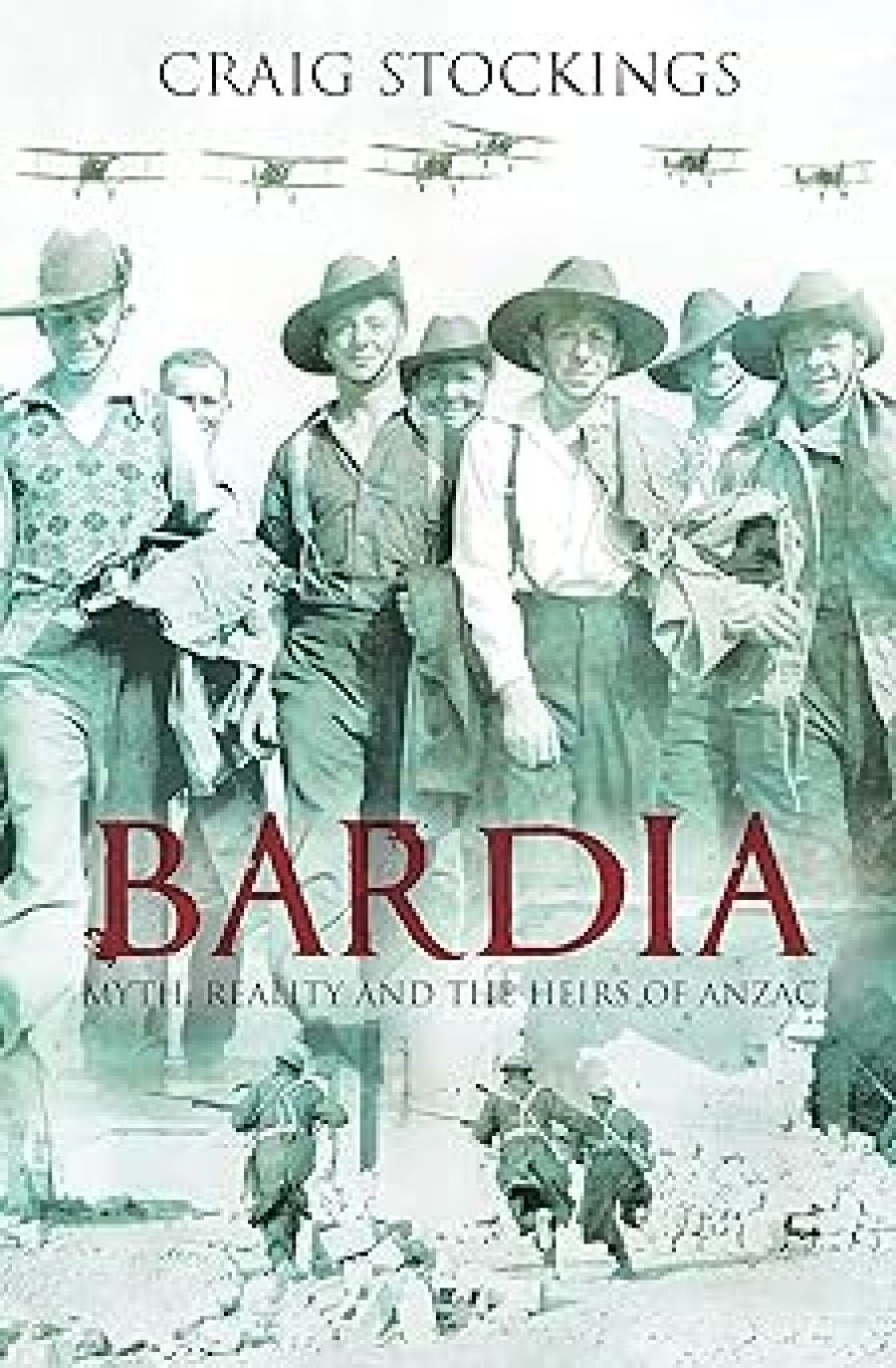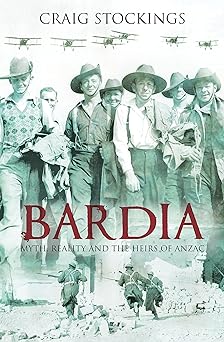
- Free Article: No
- Contents Category: Military History
- Review Article: Yes
- Article Title: Wizards of Oz
- Online Only: No
- Custom Highlight Text:
With the sun’s morning rays glinting off their bayonets, the Australian soldiers rushed headlong towards the Italian fortress of Bardia in Libya. They sang as they advanced. Although there were isolated pockets of resistance, within hours the Australians had broken through the perimeter and Italian troops were beginning to surrender in their thousands. The capture of the supposedly ‘impenetrable’ fortress of Bardia in early January 1941 by the 6th Australian Infantry Division, fighting its first battle, was a major success that led to the capture of more than 40,000 Italian soldiers. The resounding victory by these sons of the original Anzacs was held to prove the inherent combat prowess of Australians. Major General Iven Mackay, the 6th Division’s commander, afterwards commented there was the notion ‘that the Australian is a born soldier and that, once given the weapons, he is alright’. Or so the myth goes.
- Book 1 Title: Bardia
- Book 1 Subtitle: Myth, Reality and the Heirs of Anzac
- Book 1 Biblio: University of New South Wales Press, $59.95 hb, 496 pp
- Book 1 Cover Small (400 x 600):

Craig Stockings challenges this idea that the volunteer soldiers of the Australian Imperial Force (AIF) were successful simply because they were bronzed Anzacs or because the Italians were afraid to fight. Unlike many other historians and authors who, he argues, were quick to embrace Anzac mythology to explain the victory, Stockings does not rely on vague notions of national character or stereotypes to explain the difference between victory and defeat. Given the longevity of such beliefs, it is an ambitious undertaking.
The generation that fought World War II was raised on the stories, and in the shadow, of their fathers’ and uncles’ achievements at Gallipoli and on the Western Front. Consequently, when Australian correspondents reported on the first large-scale Australian engagement of World War II, their broadcasts and dispatches stressed that these new soldiers were worthy inheritors of the Anzac tradition. Broadcaster Chester Wilmot, for example, had predicted that Bardia would not be taken without ‘tremendous casualties’, but ‘the Australians never flinched’, and ‘when their fire didn’t check us, the Italians lost accuracy, and when they saw our bayonets they cracked up completely’. The ‘outstanding fact’ of the battle, Wilmot concluded, was ‘that the men of the Second AIF have shown that they are made of the same fibre as the First AIF’. After the battle, an Australian brigadier, himself a World War I veteran, wrote to reassure those at home that ‘no one need fear for the reputation of the First AIF as long as it is upheld by the men who captured Bardia’.
These themes of martial musicality, bravery under fire and national character were later reinforced in classic Australian war novels such as Lawson Glassop’s We Were the Rats (1944) and Eric Lambert’s The Twenty Thousand Thieves (1951). In Glassop’s We Were the Rats, the characters ask:
Why do you think Australians are such good soldiers? ... I think it’s because ... we play so much sport and get so much sunshine we’re always fit, and because we’ve still got the initiative and spirit that helped the pioneers to fight drought, fire and flood.
Generations of Australian authors, journalists, folklorists and politicians have crafted the qualities of the Australian soldier into the archetypal ‘digger’. The digger and the qualities he embodies – masculinity, bravery, self-sacrifice, irreverence to authority, loyalty and, above all else, mateship – have become part of the Anzac legend and are interwoven into Australian national character. The commercial successes of Patrick Lindsay’s The Spirit of Kokoda (2002) and Peter FitzSimons’s Tobruk (2006), two works that celebrate the ‘digger’, as well as the ever-increasing attendances at Anzac Day ceremonies, show that such sentiments are still powerful in the Australian public’s consciousness.
Possibly because of this obsession with the ‘digger’, most Australian historians have concentrated on soldiers’ experiences during war. Charles Bean, in the World War I official histories, established this approach, and it has been dutifully followed by subsequent writers, with parochial consequences for Australian military history. Stockings does not fall into this trap in Bardia, the first serious study of the battle since Gavin Long’s volume of the World War II official history To Benghazi (1952).
The volume is divided into three parts. The first, ‘The Setting’, places the battle in its strategic context by discussing the background to the campaign, from Mussolini’s desire to create a new Roman Empire and his ambitions in North Africa through to the first engagements there, which saw a reluctant Italian advance into Egypt pushed back into Libya by British forces and the garrison at Bardia encircled. The Australian capture of the fortress, which began on 3 January 1941 and was completed fifty-five hours later on 5 January, is told in the second section of the book.
The final third of the book, ‘The Explanation’, is the most significant. Here, Stockings sets about answering the fundamental question: how did 16,000 attackers rout an entrenched garrison of almost 40,000 defenders with relatively few casualties? In answering this question, Stockings systematically dissects the respective strengths and weakness of the opposing Australian and Italian forces. The Australians were not natural-born soldiers. They were, however, better trained, better equipped and enjoyed British artillery and tank support. They also had the advantage of air cover provided by the Desert Air Force and naval gunfire. The Italians faced great logistical difficulties in supplying their isolated garrison. The fortress design was antiquated and defended by poorly trained conscript soldiers whose commanders, both officers and non-commissioned officers, lacked inspiration and leadership ability. Bardia was not a fair fight for the Italians.
Stockings is aptly suited to make such assessments. An army officer, he served in East Timor with INTERFET during 1990–2000 and is now a senior lecturer in history at the University of New South Wales (Australian Defence Force Academy campus). He knows the inherent danger in underestimating an enemy because of national stereotypes.
This book will not appeal to everyone. There are no long quotes from soldiers’ diaries or oral history interviews to describe the soldiers’ experiences during the battle. This has already been done by numerous other works. But what the reader will get is a clear understanding of why the AIF’s first battle of the war was fought in the Libyan desert, how the AIF was trained and why it was successful. Thoroughly researched, Bardia is an important work.
Despite widespread newspaper reports at the time, stories of singing Australians going into battle were greatly exaggerated. As the artillery barrage began and as the Australians started to move forward, a sergeant in an infantry battalion led some of his soldiers in ‘South of the Border’, a popular song with British forces during 1940–41, but only those immediately around them would have been able to hear it during the bombardment. Later in the day, a British correspondent found out about the story and asked an officer in the battalion what was sung. The exhausted captain thought for a moment and then replied, ‘The Wizard of Oz’.


Comments powered by CComment